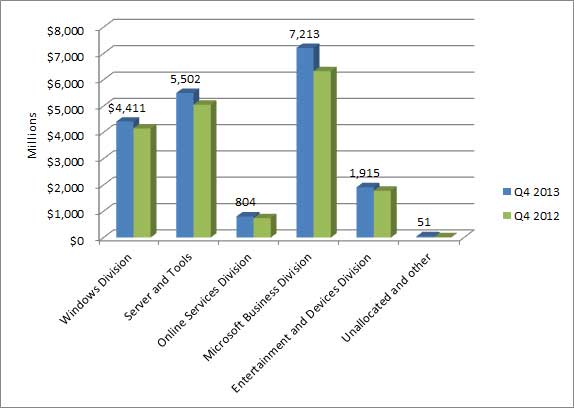News
Surface RT Drags Down Microsoft Q4 Profits
Company takes $900 million hit on "Surface RT inventory adjustments."
Microsoft's Surface RT, its struggling tablet device,continues to haunt the company.
It wasn't well-received by the market on its launch, giving Microsoft a black eye. And it continues to do poorly; so poorly, in fact, that it's affected Microsoft's overall profits.
Evidence came yesterday, as Microsoft missed market expectations in its fourth-quarter 2013 earnings report, despite rising revenues.
Overall revenue was $19.90 billion for the quarter, which ended on June 30, representing a 10 percent increase compared year over year, but that figure was below the expected $20.72 billion expected by analysts. However, when non-GAAP (generally accepted accounting principles) analysis was included to account for the effects of Microsoft's Windows Upgrade Offer and Office Upgrade Offer deferrals, then there was just a 3 percent revenue increase for the quarter, according to Microsoft's Q4 earnings report.
Microsoft reported operating income of $6.07 billion, net income of $4.97 billion and earnings per share of $0.59. Analysts had expected $0.75 earnings per share, but when Microsoft's upgrade offers were included, earnings per share dropped to $0.52 (non-GAAP estimate).
Microsoft explained that it had taken a charge of $900 million in the quarter for "Surface RT inventory adjustments," which decreased its earnings per share figure by $0.07.
Revenue across the five divisions of the company were either up or flat year over year (see chart). However, Microsoft had operating income losses of $372 million in its Online Services Division and $110 million in its Entertainment and Devices Division during the quarter.
 Microsoft Q4 2013 revenue earnings across divisions.
Microsoft Q4 2013 revenue earnings across divisions.
Non-GAAP estimates markedly changed this revenue picture, however. While the Windows Division had a revenue increase of $259 million (up 6 percent) under GAAP accounting, it was a revenue decrease of $281 million (6 percent decrease) under non-GAAP accounting for the quarter.
Server and Tools revenue brought in $452 million, up 9 percent, pushed by SQL Server. Online Services revenue was $69 million, also up 9 percent.
The Microsoft Business Division revenue was $889 million, up 14 percent, but it was just an increase of 2 percent under non-GAAP accounting. Microsoft reported a 10 percent revenue growth from Office subscriptions and a 13 percent revenue growth from Dynamics. The company was hit by a 27 percent revenue decrease due to the Office Upgrade Offer, it reported.
The Entertainment and Devices Division revenue increased $134 million (8 percent), mostly due to Windows Phone. Microsoft indicated that Windows Phone revenue increased $222 million in the quarter, although it didn't provide the total figure. Xbox shipments decreased to 1 million units.
About the Author
Kurt Mackie is senior news producer for 1105 Media's Converge360 group.